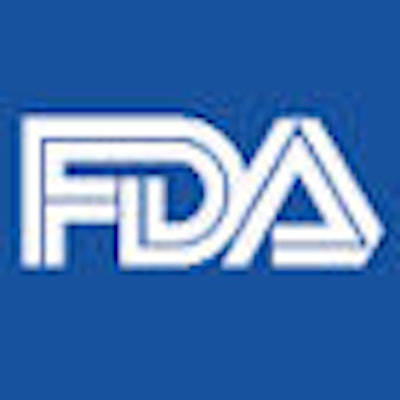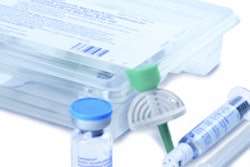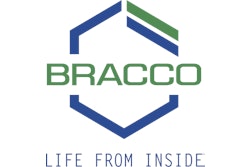
A third contestant has joined the U.S. market for ultrasound contrast agents: Bracco Diagnostics today received U.S. Food and Drug Administration (FDA) approval for its Lumason ultrasound contrast agent.
Known previously as SonoVue, Lumason (sulfur hexafluoride lipid microbubbles) is indicated for patients whose echocardiography images are hard to see with ultrasound, according to the FDA. The agency noted that three clinical trials involving 191 patients with suspected cardiac disease were used to establish Lumason's safety and efficacy
"In all three studies, Lumason helped doctors see the lining of the left ventricle more clearly, with visual improvement observed in the majority of the patients who received a 2 mL dose of the agent," the FDA said in a statement. "Lumason also helped independent reviewers in all three of the studies more clearly and completely see inside the patient's left ventricle."
The approval marks the end of a long odyssey for Bracco in its efforts to bring the ultrasound contrast agent to market in the U.S. The firm had initially submitted a new drug application (NDA) for SonoVue in 2001, but later withdrew it in 2007. A new NDA was filed in December 2011 and accepted for review by the FDA in February 2012, according to documents from the U.S. Patent and Trademark Office.
Lumason joins Definity (Lantheus Medical Imaging) and Optison (GE Healthcare) as approved ultrasound contrast agents in the U.S. As with those two agents, Lumason will carry a black box warning for the risk of serious cardiopulmonary reactions, including fatal cardiac or respiratory arrest.
In 2007, the FDA required ultrasound contrast agents to carry black box warnings after reports of 11 patient deaths between 2001 and 2007 that may have been related to ultrasound contrast administration. Advocates for ultrasound contrast were able to persuade the FDA to scale back some of the labeling for Definity and Optison in 2011 and 2012, removing provisions such as those requiring patients to be monitored after contrast administration.




















